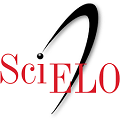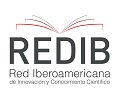Caracterización y comparación de la actividad antibacteriana intrínseca del suero de búfalo y del suero de bovino
DOI:
https://doi.org/10.14409/favecv.v16i1.6671Palabras clave:
Suero de bovino, suero de búfalo, inmunidad innata, hemólisis, actividad bactericidaResumen
La actividad antibacteriana de los sueros de bovino y de búfalo fue evaluada in vitro de manera indirecta con dos reacciones de inmunohemólisis: (i) un ensayo de hemólisis-hemoaglutinación sobre eritrocitos no sensibilizados de conejo y (ii) un ensayo de cinética de eritrocitos no sensibilizados de conejo frente a concentraciones crecientes de suero. La actividad bactericida de los sueros fue evaluada in vitro cuantificando la reducción de desarrollo de un inóculo de Escherichia coli en medio de cultivo enriquecido con suero de ambas especies. En el ensayo de hemólisis-hemoaglutinación, la hemólisis máxima se observó hasta la dilución 1:16 del suero de ambas especies. El mayor porcentaje de hemólisis se obtuvo con el suero de búfalo (84,7 ± 9,71%) respecto del suero bovino (71,0 ± 5,05%). Sin embargo no se hallaron diferencias en las diluciones de suero necesarias para obtener el 50% de la hemólisis total, siendo estas de 10,2 ± 2,48 para el suero de bovinos y de 11,8 ± 2,18 para el suero de búfalo. El suero de búfalo redujo el desarrollo bacteriano en un 69,8% respecto del 47,2% obtenido por el suero de bovino. No obstante estos resultados, se necesitarán estudios adicionales para corroborar estos hallazgos in vivo..
Citas
Arya A and Goel MC. 1992. Studies on activation and levels of haemolytic complement of buffalo (Bubalus bubalis). II. Alternate complement pathway activity in serum. Vet. Immunol. Immunopathol. 30: 411-418.
Baggot JD. 2001. The physiological basis of veterinary clinical pharmacology. Ed. Blackwell Science, London. 283 pp.
Baumgarth N, Herman O, Jager G, Brown L, Herzenberg L, Chen J. 2000. B-1 and B-2 cell-derived immunoglobulin M antibodies are nonredundant components of the protective response to influenza virus infection. J. Exp. Med. 192: 271-280.
Baumgarth N, Tung J, Herzenberg, L. 2005. Inherent specificities in natural antibodies: a key to immunedefense against pathogen invasion. Semin. Immunopathol. 26: 347-362.
Baumgarth N. 2013. Innate-like B cells and their rules of engagement. Adv. Exp. Med. Biol. 785: 57–66.
Blazewicz SJ, Schwartz E, Firestone MK. 2014. Growth and death of bacteria and fungi underlie rainfall-induced carbon dioxide pulses from seasonally dried soil. Ecology 95: 1162–1172.
Costabile M. 2010. Measuring the 50% Haemolitic Complement (CH50) activity of serum. J. Vis. Exp. 37: e1923.
Dave S, Brooks-Walter A, Pangburn MK, McDaniel LS. 2001. PspC, a pneumococcal surface protein, binds human factor H. Infect. Immun. 69: 3435–3437.
Ehrenstein MR, Notley CA. 2010. The importance of natural IgM: scavenger, protector and regulator. Nat. Rev. Immunol. 10: 778-786.
Franco RS. 2012. Measurement of Red Cell Lifespan and Aging. Transfus. Med. Hemother. 39: 302-307.
Franck SM, Bosworth BT, Moon HW. 1998. Multiplex PCR for enterotoxigenic, attaching and effacing, and Shiga toxin-producing Escherichia coli strains from calves. J. Clin. Microbiol. 36: 1795-1797.
Firsov A, Sergey N, Vostrov S, Shevchenko A, Cornaglia G. 1997. Parameters of bacterial killing and regrowth kinetics and antimicrobial effect examined in terms of area under the concentration-time curve relationships: action of cipro-floxacin against Escherichia coli in an in vitro dynamic model. Antimicrob. Agents Chemother. 41: 1281-1287.
Giacomino N, Cerra M, Stiefel S, Gumiy D, Notaro U, Buffa E,
Baroni E, Formentini E. 2011. Actividad bactericida intrínseca de suero bovino sobre cepas de Escherichia coli y Staphylo-coccus aureus. Revista FAVE - Sección Ciencias Veterinarias 10: 45-57. doi.org/10.14409/favecv.v10i2.1540
Giacomino N, Cerra M, Gumiy D, Stiefel S, Notaro U, Baroni E, Formentini E. 2012. Pharmacokinetic-pharmacodynamic modeling of antibacterial activity of cephalexin on Escherichia coli in presence of canine serum. Rev. Med. Vet. (Tolouse) 163: 431-440.
Goutelle S, Maurin M, Rougier F, Barbaut X, Bourguignon L, Ducher M, Maire P. 2008. The Hill equation: a review of its capabilities in pharmacological modelling. Fundam. Clin. Pharmacol. 22: 633-48
Grumach AS, Ceccon ME, Rutz R, Fertig A, Kirschfink M. 2014. Complement profile in neonates of different gestational ages. Scand. J. Immunol. 79: 276-281.
Hangartner L, Zinkernagel RM, Hengartner H, 2006. Antiviral antibody responses: the two extremes of a wide spectrum. Nat. Rev. Immuol. 6: 231–243.
Horstmann RD, Sievertsen HJ, Knobloch J, Fischetti VA. 1988. Antiphagocytic activity of streptococcal M protein: selective binding of complement control protein factor H. Proc. Nat. Acad. Sci. 85:1657-1661.
Jaskowski TD, Martins TB, Litwin CM, Hill H. 1999. Comparison of Three Different Methods for Measuring Classical Pathway Complement Activity. Clin. Diag. Lab. Immunol. 6: 137-139.
Matson K, Ricklefs R, Klasing K. 2005. A hemolysis-hemagglutination assay for characterizing constitutive innate humoral immunity in wild and domestic birds. Develop. Comp. Immunol. 29: 275-86.
Mayer M. 1967. Complement and complement fixation. In: E. Kabat & M. Mayer (eds.), Experimental Immunochemistry, 2nd ed. Charles Thomas, Springfield. pp. 133-240
Moreno-Indias I, Dodds AW, Argüello A, Castro N, Sim RB. 2012. The complement system of the goat: haemolytic assays and isolation of major proteins. BMC Vet. Res. 8: 91-100.
Motulsky HJ, Ransnas LA. 1987. Fitting curves to data using nonlinear regression: a practical and nonmathematical review. FASEB J. 1: 365-374.
Lindoro AGB. 2010. Reacción hemolítica aguda. Rev. Mex. Med. Tran. 3: 18-21.
OIE - World Organisation for Animal Health. 2008. Pruebas para comprobar la esterilidad y la ausencia de contaminación de los productos biológicos. Capítulo 1.1.9. (pp. 1-11). En: Manual de la OIE sobre animales terrestres.
Oyekan PP and Barta O. 1980. Hemolytic assay for goat (caprine) and swine (porcine) complement. Vet. Immunol. Immunopathol. 1: 317-328.
Ochsenbein A, Zinkernagel R. 2000. Natural antibodies and complement link innate and acquired immunity. Immunol. Today 21: 624-630.
Prasadarao NV, Blom AM, Villoutreix BO, Linsangan LC. 2002. A novel interaction of outer membrane protein A with C4b binding protein mediates serum-resistance of Escherichia coli K1. J. Immunol. 169: 6352-6360.
Siroski P, Merchant M, Parachú Marcó MV, Piña CI, Ortega HH. 2010. Characterization of the serum complement activity of the broad-snouted caiman Caiman Latirostris (Crocodilia: Alligatoridae). Zool. Stud. 49: 64-70.
Siroski P, Russi N, Ortega H, Formentini E. 2015. In vitro evaluation of synergistic activity between ciprofloxacin and broad snouted caiman serum against Escherichia coli. Research in Veterinary Science. 98: 98-105.
Wooster DG, Maruvada R, Blom AM, Prasadarao NV. 2006. Logarithmic phase Escherichia coli K1 efficiently avoids serum killing by promoting C4bp-mediated C3b and C4b degradation. Immunology 117: 482–93.
Descargas
Publicado
Cómo citar
Número
Sección
Licencia
FAVE Sección Ciencias Veterinarias ratifica el modelo Acceso Abierto en el que los contenidos de las publicaciones científicas se encuentran disponibles a texto completo libre y gratuito en Internet, sin embargos temporales, y cuyos costos de producción editorial no son transferidos a los autores. Esta política propone quebrar las barreras económicas que generan inequidades tanto en el acceso a la información, como en la publicación de resultados de investigaciones.
Los artículos de la revista son publicados en http://bibliotecavirtual.unl.edu.ar/publicaciones/index.php/FAVEveterinaria/issue/current/, en acceso abierto bajo licencia Creative CommonsAtribución-NoComercial-Compartir Igual 4.0 Internacional.











